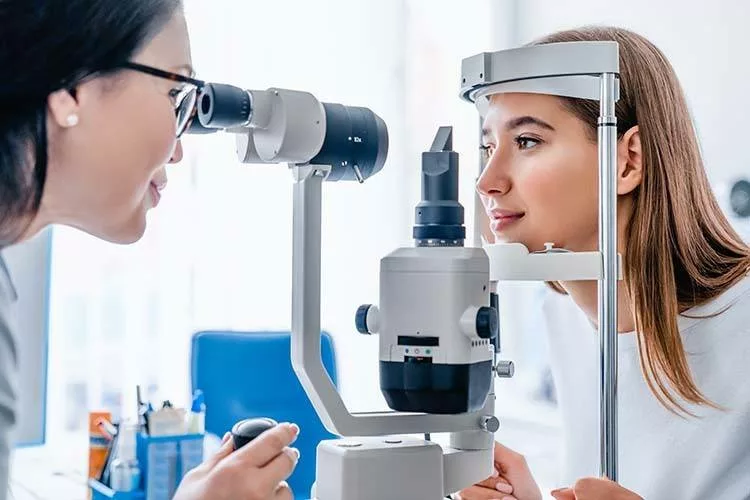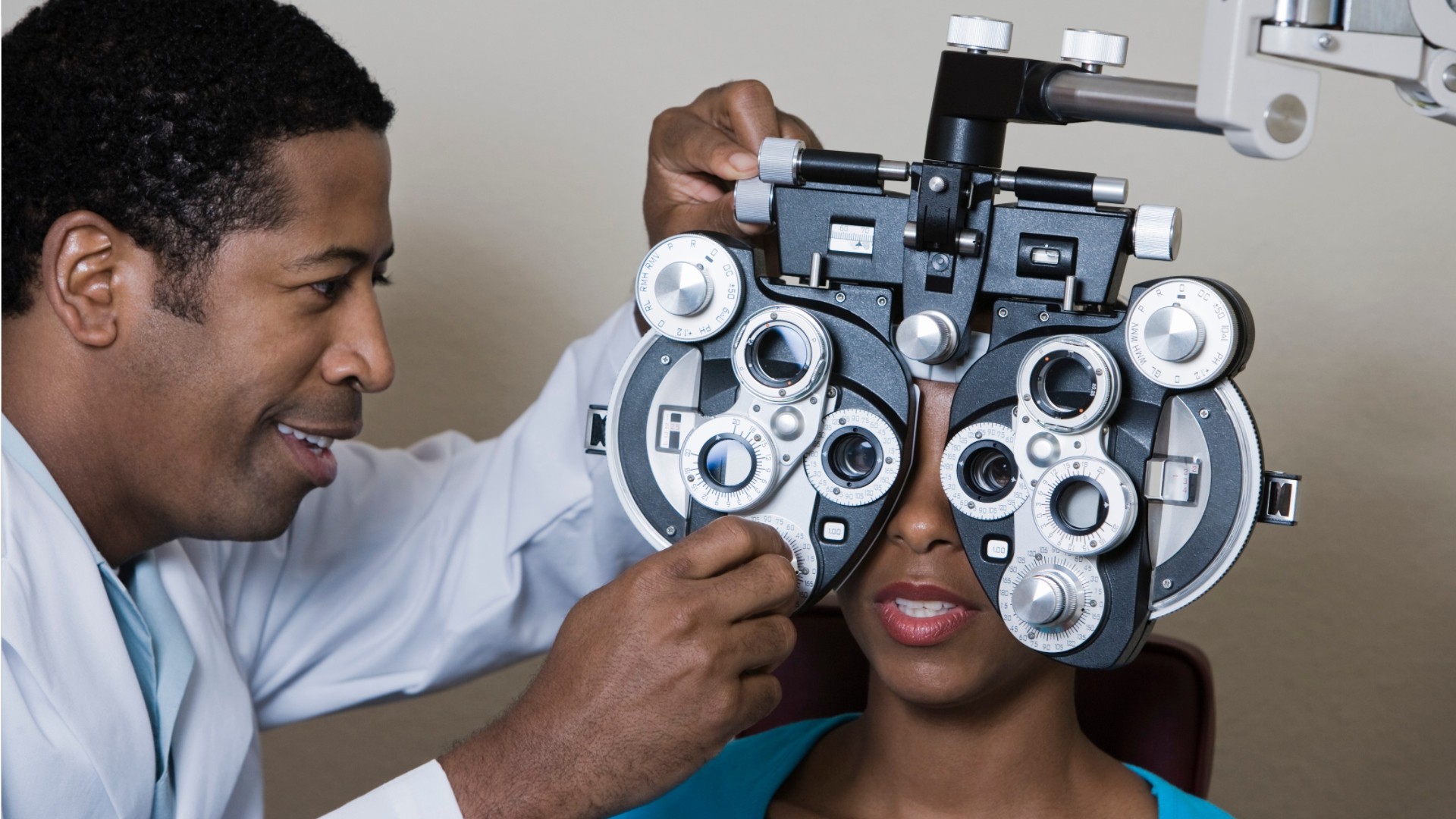Just How an Eye Doctor Can Help Avoid Vision Issues in Chino
Wiki Article
Checking Out the most up to date Technological Improvements in Optometry and What They Mean for Optometrists
From the precision of Optical Coherence Tomography to the nuanced understandings used by AI-driven diagnostic devices, these innovations are setting brand-new requirements in person evaluation and treatment. As these improvements penetrate the technique, optometrists are faced with the difficulty of welcoming these devices to boost client results.Developments in Diagnostic Equipment
Progressing the field of optometry, technologies in diagnostic tools have changed the method eye treatment experts analyze and diagnose aesthetic impairments and ocular conditions. The past years has actually witnessed significant technological advancements, enabling more accurate and extensive examinations. Optical Coherence Tomography (OCT), for instance, supplies high-resolution cross-sectional photos of the retina, enabling the very early detection of diseases such as glaucoma and age-related macular degeneration. This non-invasive imaging method has actually come to be important in modern optometric practice.Another key innovation is the intro of innovative corneal topography systems, which map the surface curvature of the cornea with precision. These devices are particularly valuable for fitting get in touch with lenses and detecting corneal conditions. Digital retinal imaging has actually transformed typical ophthalmoscopy, providing detailed, breathtaking sights of the retina that facilitate extensive visual examinations.
The advancement of wavefront aberrometry has additionally been important, making it possible for the analysis of refractive errors with unrivaled precision (Opticore Optometry). This modern technology aids in tailoring rehabilitative lenses and boosting surgical end results for refractive surgical procedures. Collectively, these diagnostic innovations empower optometrists to deliver exceptional patient treatment, ensuring early treatment and tailored therapy methods, eventually enhancing visual wellness results
AI in Individual Management
Building on the foundation of advanced analysis devices, the incorporation of artificial knowledge (AI) in individual management represents a transformative leap for optometry. AI systems are increasingly used to boost efficiency, precision, and personalization in client treatment. By assessing substantial amounts of data, AI can identify patterns and predict possible ocular conditions, making it possible for optometrists to customize interventions more effectively. This capacity is important in handling persistent eye conditions such as glaucoma and diabetic person retinopathy, where very early detection and continuous monitoring are vital.In addition, AI-driven platforms promote structured individual communications and administrative procedures. Automated scheduling, digital assessments, and individualized follow-up plans not just enhance client satisfaction yet also enhance time administration for professionals. These systems can triage patients based on the seriousness of their problems, making sure that those in crucial requirement obtain prompt interest.
In addition, AI enhances decision-making by offering optometrists with evidence-based referrals and treatment pathways. By integrating information from electronic health records, AI tools offer understandings that educate scientific choices, lowering the risk of errors and enhancing individual end results. As AI continues to develop, its function in patient monitoring will likely broaden, improving the landscape of optometric treatment.
Breakthroughs in Retinal Imaging
In the realm of optometry, retinal imaging has seen amazing technical developments that are improving diagnostic capabilities and patient treatment. Technologies such as Optical Comprehensibility Tomography (OCT) and fundus photography have actually revolutionized how eye doctors imagine and assess the retina.Improved imaging modalities like OCT angiography are more refining analysis accuracy. This non-invasive strategy maps blood flow in the retina, supplying vital understandings into vascular wellness without the requirement for color injections. In addition, adaptive optics technology is being integrated into retinal imaging systems to deal with ocular aberrations, supplying extraordinary image clearness. Such developments promote the recognition of minute retinal modifications that can signify disease development.
Additionally, advancements in expert system are boosting retinal imaging by enabling computerized analysis of big datasets. These systems help eye doctors in recognizing patterns a sign of pathology, therefore enhancing diagnostic precision and efficiency. Collectively, these technologies are transforming retinal imaging into a keystone of modern eye treatment, boosting outcomes and increasing healing opportunities.
Teleoptometry's Expanding Duty
visit the site Teleoptometry is progressively becoming an important element of eye care, driven by developments in digital communication and analysis devices. As optometry accepts digital transformation, teleoptometry promotes remote consultations, allowing eye doctors to extend their services beyond traditional boundaries. This is particularly helpful in underserved and rural areas where accessibility to specialized eye treatment is usually minimal. By leveraging high-resolution video conferencing and advanced retinal imaging, optometrists can carry out detailed eye examinations from afar, making certain prompt medical diagnosis and treatment.The integration of expert system (AI) more improves teleoptometry, making it possible for the analysis of visual information and aiding in the discovery of eye problems such as glaucoma and diabetic retinopathy. AI-powered formulas can rapidly translate complex imaging information, offering eye doctors with useful understandings that strengthen professional decision-making.
Additionally, teleoptometry supports connection of care via seamless integration with digital health documents (EHRs), allowing optometrists to keep comprehensive person histories. When seeking advice from with various experts., this guarantees that individuals receive regular and individualized treatment even.
Regardless of these advantages, difficulties stay, including ensuring data protection and managing patient assumptions. However, teleoptometry stands for a significant stride towards more easily accessible, reliable, and patient-centered eye treatment. As modern technology advances, its my response duty is positioned to increase better.

Future Trends in Eye Care
A myriad of innovative fads is readied to improve the future of eye treatment, driven by technological innovations and the evolving needs of patients. One significant pattern is the combination of synthetic intelligence (AI) in diagnostics, which promises to enhance the precision and effectiveness of eye assessments. AI algorithms can examine huge amounts of data from retinal photos, possibly spotting problems like diabetic person retinopathy and glaucoma earlier than conventional methods.Additionally, customized medication is gaining traction in optometry, with genetic testing notifying tailored treatment strategies. This technique aims to enhance person results by tailoring treatments to individual hereditary accounts. Wearable innovation, such as clever get in touch with lenses, is also imminent, supplying real-time surveillance of intraocular pressure or sugar levels, hence offering continual understandings right into systemic and ocular health and wellness.
The adoption of increased fact (AR) and virtual truth (VIRTUAL REALITY) in training and individual education is an additional emerging pattern. These modern technologies use immersive experiences that can enhance understanding and skills both for eye doctors and patients. As these patterns evolve, optometrists have to stay abreast of technical developments to provide advanced treatment, making certain improved individual outcomes and satisfaction in the dynamic landscape of eye care.
Final Thought

Jointly, these analysis improvements equip optometrists to supply superior client treatment, making certain very early intervention and customized therapy techniques, ultimately boosting visual health and wellness results.

As these technologies continue to advance, optometrists need to adjust and incorporate them into technique, eventually maximizing workflow effectiveness and elevating the requirement of eye treatment supplied to clients.
Report this wiki page